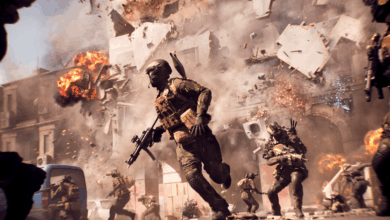Grounded 2 early access review – Obsidian evolves the ant-size original into a more than justified sequel
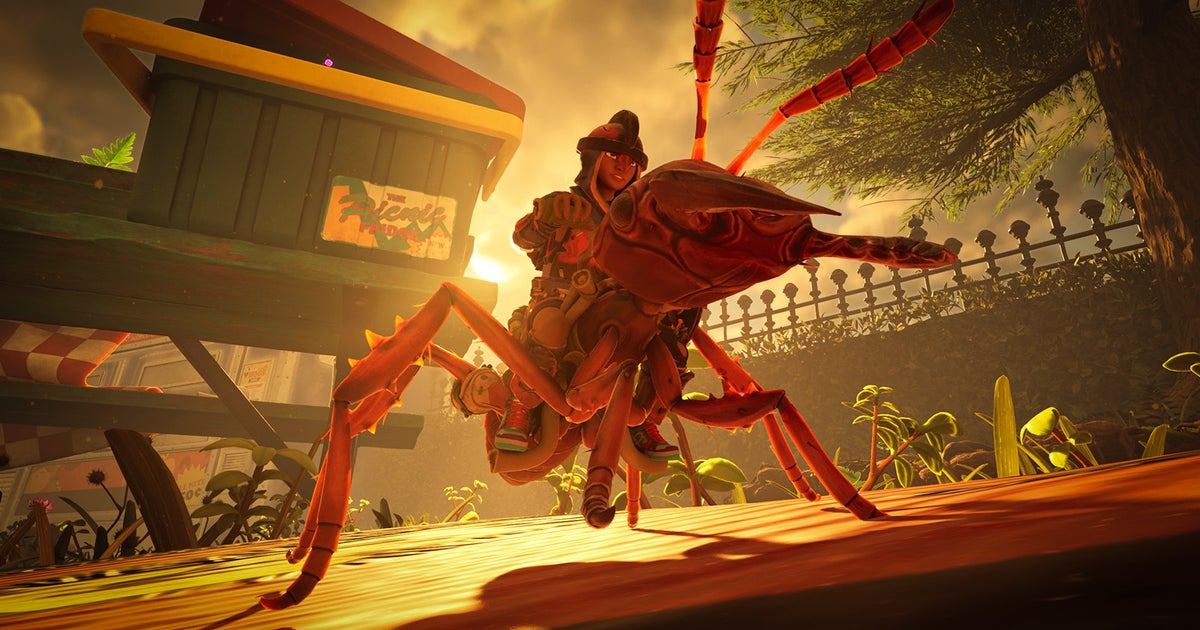
The ant-sized thrills of Grounded return in a sequel which lays exciting foundations for the future. There’s work to do but, already, an exciting adventure to have.
It’s the little details that get me. It’s dog-sized baby cockroaches and their elephant-sized elders showing up to slurp the goo of enemies I’ve been fighting, or the rhinoceros-sized bees hovering like helicopters as they collect pollen from plants. It’s stumbling upon orb weaver spiders the size of cars, snoring at night, or tank-sized wolf spiders battling tank-sized scorpions in the dark, all red eyes, pincers, shrieks and fangs. It’s the scuttling and scurrying you hear as you tiptoe through grass-blade forests, living in a world usually hidden beneath your feet, feeling like you’re only seeing it now for the first time. It’s walking down the road in real life and wondering, as you see berries trodden into the ground, how strong their skin really would be if made into armour. That’s the effect Grounded 2 has.
But broadly speaking, we’ve been here before. Grounded 2, like Grounded 1 before it, is a co-operative survival game based around the concept of you being shrunk to ant size and having to survive in the magnified insect world you now see around you. You still chop blades of grass the size of trees to build a base with, you still collect dew drops in the morning to drink from, and you still chase tiny green aphids around in order to cook them on a spit. You still work your way through tiers of equipment made with varying insect parts, and you’re still on the trail of the shady company with tiny-sized bases in the world that has done this to you, for some reason. The playing space might have changed from a backyard garden to a park, but the experience is fundamentally the same.
The question becomes, then, whether this sudden-to-appear sequel does enough to justify the sequel tag, and you’ll know if you read my impressions of Grounded 2’s early access release last week, I was previously unsure. It had flashes of brilliance but they were countered by moments of frustration while playing alone. I ended that piece wanting to see more and to experience the game with other people, which I now have, which is why I’m more confident telling you Grounded 2 isn’t only a justifiable sequel but, in actual fact, the next-generation of the idea.
It’s clever. Making a new game rather than expanding the older one has allowed developer Obsidian, and its co-developer Eidos Montreal, to both rebuild the Grounded experience in a new engine, allowing it to subtly but significantly increases the fidelity of the world – particularly where lighting is concerned – while also designing a playing area that can support new gameplay ideas. The biggest and most exciting of these is mounts. You can now gallop around the world on ant-back or spider-back, which not only greatly speeds your exploration but allows you to more reliably outrun enemies. They also help you carry significantly more, having separate, larger inventories of their own, and this greatly eases mobile storage issues. It’s much safer to store valuable materials with your mount, because if you die, you’ll drop your backpack and things you’ve collected, but if they die, they’ll be returned to base, bag intact.
Betty, my ant, is also a base-building beast. She chomps through base-building materials like grass and weed stems much quicker than I, and she’s able to haul – using a separate carrying arm – twice the amount I can on my shoulder, and at a much greater speed. She’s an essential tool in battle as well. I can fight with her directly, while riding on her back, but in dangerous battles it’s better to hop off and have her fight alongside me, providing a distraction as the enemy turns to fight her, which gives me a breather and a chance to flank and reach weak spots at the enemy’s rear. Mounts are invaluable, then, and they’re cute. They provide a feeling of companionship in Grounded 2 when real-life friends aren’t around, as you plunge into deep, dark, intimidating caverns on your own. They pull on exactly the same heart-strings as “Anty” did in the film Honey I Shrunk the Kids – a film these games take so much from. Even the orb weaver spider mount is cute when wearing, as it does, its many leg warmers.
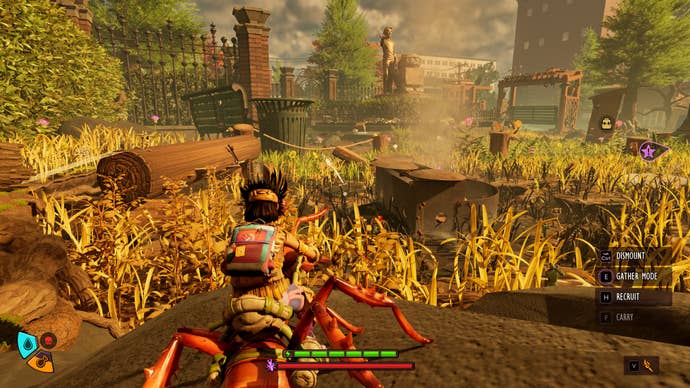
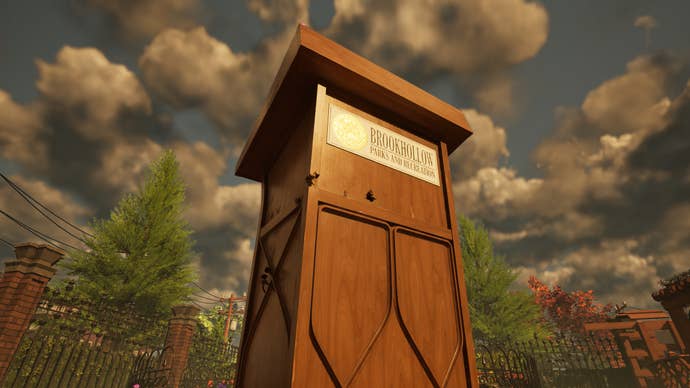
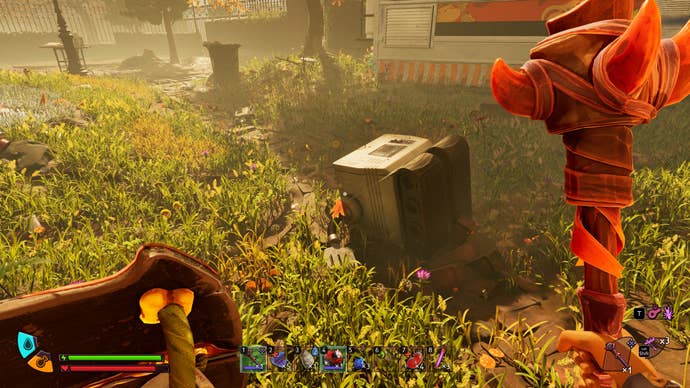
The world is larger in order to support these mounts and their movement. That has a slight downside in that you’ll feel your absence if they’re unavailable, either because you haven’t unlocked them yet or they’re healing back at base after being defeated, but having more space has also meant Obsidian and Eidos have been able to spread the game out more. There’s a much stronger sense of zones or regions in the games now, usually clustered around large landmarks such as towering wooden lecterns or picnic tables or bins, and you’ll learn to navigate the world by them, in lieu of an in-game compass to navigate with.
This initially irritated me because I kept getting lost, as it’s not particularly clear where you are when you pull up the in-game map – or rather, it wasn’t when I was playing pre-public release. There’s now a marker on your map showing exactly where on it you are. Nevertheless, as I began to learn the layout of the land, and where things were in relation to these landmarks, I came to like it. Orienting yourself in Grounded 2 feels like learning an area in real life, prompting you to do natural-feeling things like climbing to higher ground to get a better view, above the tops of the grass-blade forest, which results in spectacular views. While some areas can feel a little under-populated – and the game still is, ultimately, under construction – this expansiveness allows everything more space to breathe. It also allows the game to move tougher enemies like scorpion packs, praying mantis, and wolf spiders to parts of the world you won’t explore until later on, which is a great relief.
In some of these zones we also discover more of the game’s new ideas, in status effects such as sizzling and burning, in the smouldering barbecue area of the game, or chilling and freezing around the frozen area of the tipped over ice-cream cart. These status effects require you to develop ways to mitigate them, if you want to explore there, and also, excitingly, to harness them for your own ends, which means reams of new equipment types built around them. It also means enemies have resistances and vulnerabilities to them, too. Coupled with more enemy blocking, and a new player dodge move, it means there’s more to think about in combat now – more possibilities, more strategy. The overall hope, I think, is that you’ll prepare for encounters in Grounded 2 almost as you would in a Monster Hunter game, brewing special (here called smoothies) and making special foods and grenades and equipment. I like the complexity here but it does take a while to do, especially tracking down the resources you need to make certain equipment. In practice, you’ll probably make do with one approach, as I did, rather than varying it all the time. But the potential is there, and I imagine on harder difficulties – I played on medium and easy – you’ll have no choice but to seek every advantage you can get. Grounded 2 can be a challenging game.
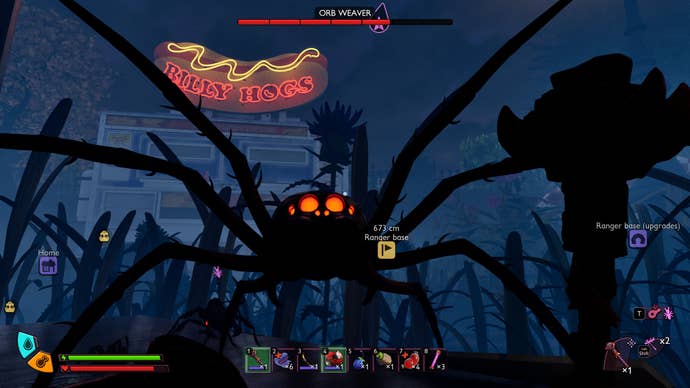
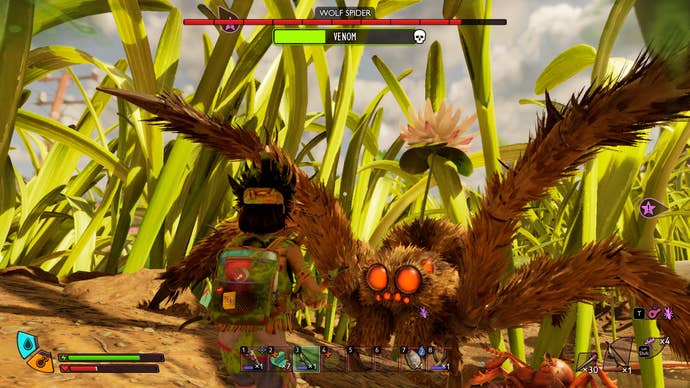
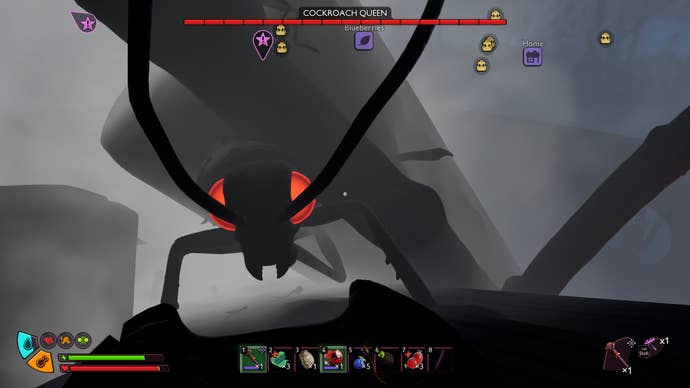
And a quick shout-out to the story in this regard: the objectives it gives frequently lead you into tricky situations, forcing you to take risks probably ahead of your capabilities in order to see them done. Case in point: stealing a red soldier ant in order to get your mount, which is an essential thing you’ll want to do. Not only is the ant hill you’ll need to descend down guarded by many soldier ants and a roaming orb weaver spider, which will be tough for you at that point in the game, but the moment you pick the soldier ant egg up, the whole hill will turn against you, prompting a furious race to freedom. It’s exhilarating; so many of the quests in the game are. And there are a lot of them – I’ve still got at least one to go after 30+ hours of play. It feels generous and well tied together in this regard.
Where most of Grounded 2 undoubtedly comes alive, though, is in multiplayer, which you can play with up to three other people. Not only is it more fun to have other people with you as you explore this insect kingdom, marvelling at the sights you’ll see, it’s also safer, because they’ll be able to get you back up if you’re downed by an enemy. Playing together also makes much shorter work of base building, which can be laborious alone, gathering piles of resources. With mounted friends all harvesting and contributing stockpiles of resources, you’ll be able to realise grand, multi-floored and roofed designs in an evening or so of play.
Group play also brings to the fore some of the new class-like combat ideas, which use equipment sets and swappable passive mutation abilities to mimic the sort rogue and mage and other roles you see in class-based games. Rogues can do huge ambush damage (like a sneak attack) and mages can lob grenade-like bombs that explode in a small area, catching all enemies caught within, as well as set enemies on fire or freeze them. Couple them with a tank who can take and survive enemy attention, and you have a well shaped group capable of taking on big enemies. You’re unlikely to explore much of this playing on your own, but with friends, it offers way more variation than all whacking something with a big club, and it allows the developers to develop the combat encounters a bit, pushing towards a sort of MMO-like dungeon and bosses design. I’ve faced off against huge named bosses that are guarding special pieces of named loot, and the potential is there for the game to do much more, particularly as more tier three, four and five encounters are added through early access.
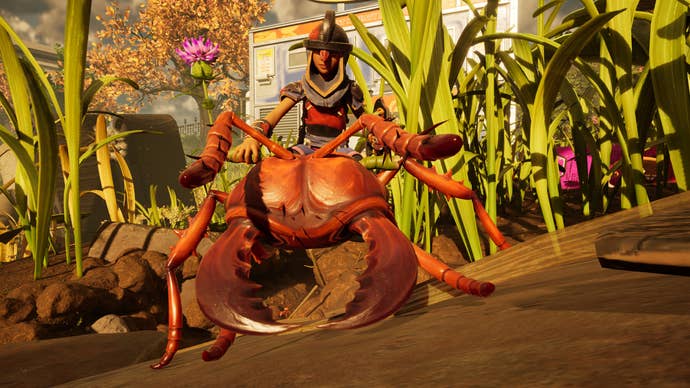
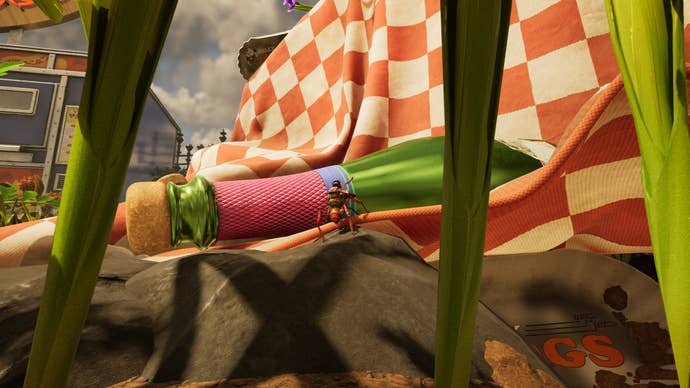
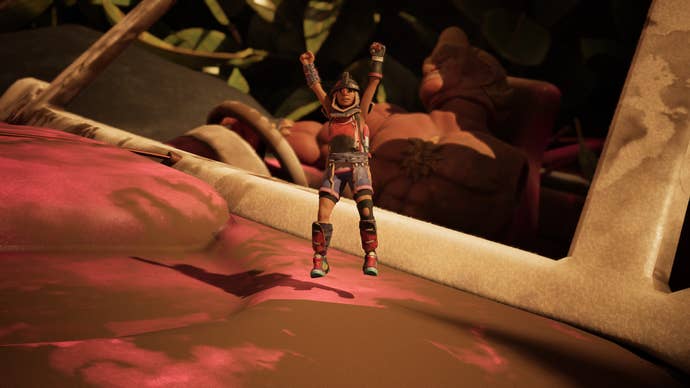
None of this is to say you can’t play Grounded 2 alone. I maintain – and I’ve seen from comments in my previous article that many of you feel the same – that the solo experience of Grounded, as in Grounded 2, of inching around a dangerous wilderness and scrapping for survival, remains one of the most tense gaming experiences I’ve had, especially on medium difficulty or harder (I died enough on medium; I can’t imagine hard). So yes, there’s always a background feeling that you’re missing something if you’re not playing with friends, but there’s a different and potent and equally rewarding experience to be had on your own. The satisfaction of gradually taming this wilderness by yourself, and of smacking a group of scorpions that previously ate you up, feels immense.
But the game is not finished, and I want to stress this point clearly. We’re at the start of what will probably be a two-year-ish early access development period for Grounded 2, for which a fairly comprehensive roadmap has already been shared. Judging by it, there’s a lot to come to the game, including new mounts, new areas to explore in the park, more story, new tiers of equipment, gameplay system overhauls and additions, and more. But it’s equally important to stress there’s a lot here already, too.
Grounded 1 was initially an experiment, a testing of the waters, which was dazzling for the newness and originality it presented, but lacking in several ways. Grounded 2 is more familiar, which makes it harder for the game to impress early on, as you repeat similar processes in what feels like a very similar experience. But because it’s building on an existing foundation, it’s also a fleshier and more rounded experience than Grounded 1 was when it first appeared. There’s lots of accrued learning here. Again, it’s the little details I really appreciate, such as how you can “hot deposit” items you’ve gathered into chests in your base, holding down a button to instantly dump and sort whatever you’ve collected into relevant chests. You can then automatically pull resources from those chests when using nearby crafting stations. These are workflow processes that save a lot of faff and time in the game.
I like, too, how consumable-related crafting stations, such as the smoothie maker and oven, find uses for materials you probably won’t need later in the game but will still gather in abundance, such as orb weaver spider parts, meaning they won’t become redundant. This all screams expertise to me, suggesting Obsidian really understands, now, how people play the game. There’s tweaking to do, there’s development to do, but already Grounded 2 offers many hours of enjoyable adventure. Should Obsidian and Eidos be able to fill in missing pieces while also detailing and deepening what’s already there – and its track record with Grounded 1 suggests it will – this could be another great success. Grounded has evolved. I can’t wait to see what else Grounded 2 can do.
A copy of Grounded 2 was provided for review by Microsoft Game Studios.

